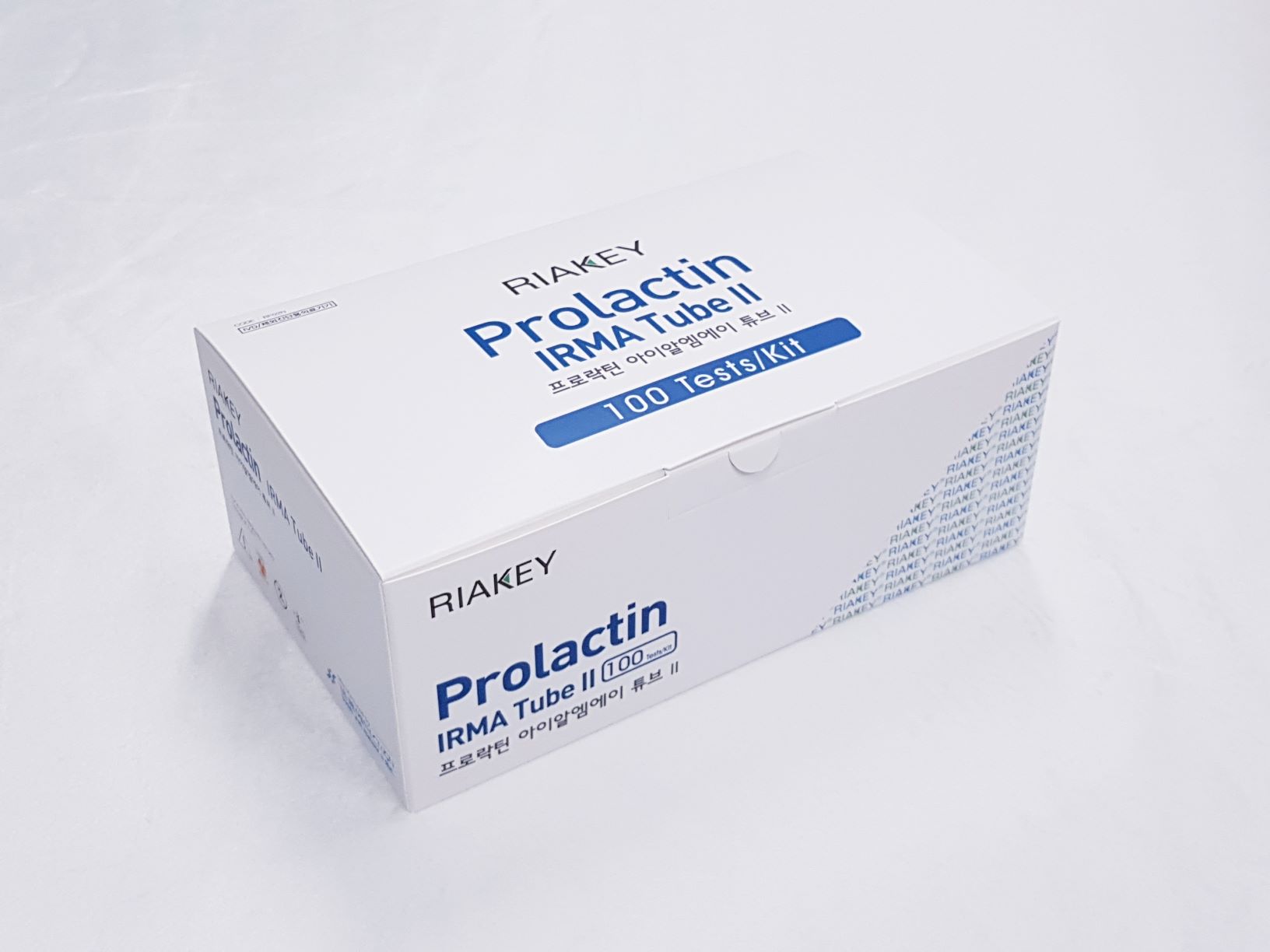Prolactin IRMA Tube II
Immunoradiometric assay for quantitative determination of prolactin (PRL) in human serum or plasma
Summary
-
KFDA Registration No
14-3170
-
CAT No
RF02N
-
TEST METHOD
IRMA
-
SAMPLE VOLUME
25 ul
-
INCUBATION TIME
120'RT
-
STD RANGE
0-200 ng/ml
Download File
Intended Use
Immunoradiometric assay for quantitative determination of prolactin (PRL) in human serum or plasma
INTRODUCTION
The human Prolactin (hPRL) is a polypeptide hormone consisting of 198 amino acids and is synthesized by the acidophilic cells of the anterior pituitary gland. Its molecular weight is approximately 23.000 Daltons. Synthesis and secretion of prolactin is regulated by the hypothalamus. The most important function of the prolactin is to stimulate the growth of the mammary gland in a woman and to start and maintain the secretion of milk. In cases of functionally disorders of the hypothalamic-pituitary axis, prolactin is secreted by the lactortrophic cells continuously. That allows the conclusion that no prolactin releasing hormone exists, but only an inhibiting hormone. Dopamine inhibits the secretion of prolactin, but it’s similarity to “prolactin-inhibiting factor (PIF)” is not yet clarified. Thyrotropin releasing hormone (TRH), estrogens and a lot of drugs, such as neuroleptica and antidepressiva show a prolactin-releasing effect. Prolactin supports the development of the mammarian gland and the secretion of milk. Additionally it effects to a lot of other metabolic pathways, such as glucose metabolism. Approximately 20% of all cases of female infertility and menstrual disorders are caused by hyperprolactinemia, in most cases by adenomas of the pituitary gland (prolactinomas). A different form is called idiopathic hyperprolactinemia, the nature of which is rather unclear to date. Clinically elevated prolactin levels in the female are resulting in amenorrhosea, galactorrhoea and infertility, in the male it causes impotence and loss of libido.
PRINCIPLE OF THE ASSAY
The RIAKEY Prolactin IRMA Tube II is an one step non-competitive immunoradiometric (IRMA) method (“sandwich”). The method employs two highly specific monoclonal anti-PRL antibodies which recognize two different epitopes of the molecule. One antibody is coated on solid phase (coated tube), the other, specific for the PRL and labeled with Iodine-125, is used as a tracer. Antibody-coated polystyrene tubes serve as solid phase. The tracer antibody and the coated antibody react simultaneously with the PRL antigen present in the standards, control serum and samples. Unbounded material is removed by a washing step. The amount of bound tracer will be directly proportional to the PRL antigen concentration and the remaining radioactivity bound to the tubes is measured in a gamma scintillation counter.
Use Precaution
Be careful when handling all samples, reagents, or devices used in the test as they may be the source of infection.
All reagents, human body samples, etc. are handled at the designated location.
- Do not use mixed reagents from different lots.
- Do not use reagents beyond the expiration date.
- Use distilled water stored in clean container.
- Use an individual disposable tip for each sample and reagent, to prevent the possible cross-contamination among the samples.
- Store the unused coated tubes at 2~8ºC in the appropriate bags with silica gel and accurately sealed.
- If large quantity of assay would be performed at one time, there might be substantial time variation between 60 tubes at one time to minimize time variation. Also, do not exceed 10 minutes for entire pipetting.
- Wear disposable globes while handling the kit reagents and wash hands thoroughly afterwards.
- Do not pipette by mouth.
- Do not smoke, eat or drink in areas where specimens or kit reagents are handle.
- Handle samples, reagents and loboratory equipments used for assy with extreme care, as they may potentially contain infectious agents.
- When samples or reagents happen to be split, wash carefully with a 3% sodium hypochlorite solution.
- Dispose of this cleaning liquid and also such used washing cloth or tissue paper with care, as they may also contain infectious agents.
- Avoid microbial contamination when the reagent vial be eventually opend or the contents be handled.
- Use only for IN VITRO.

